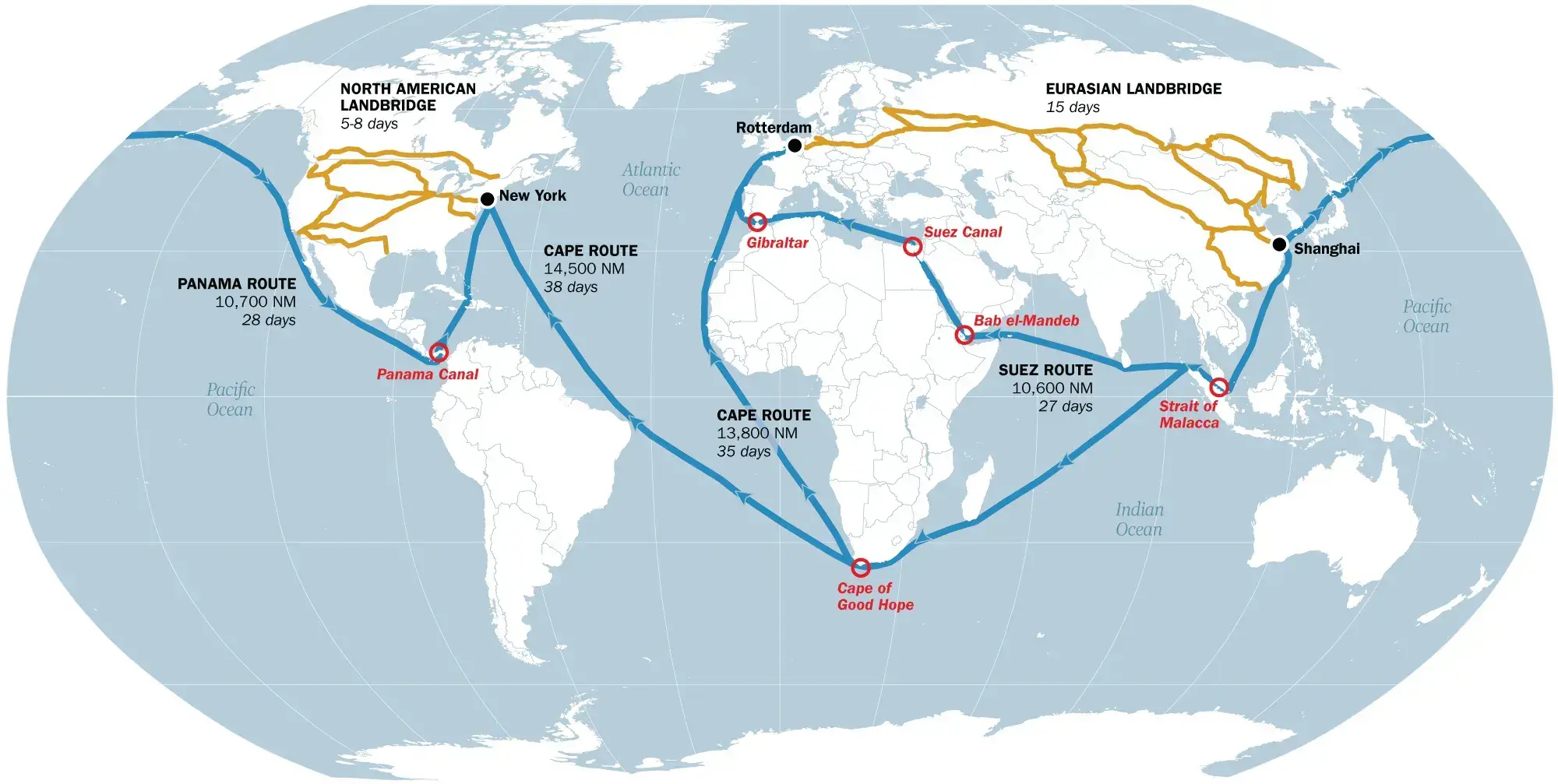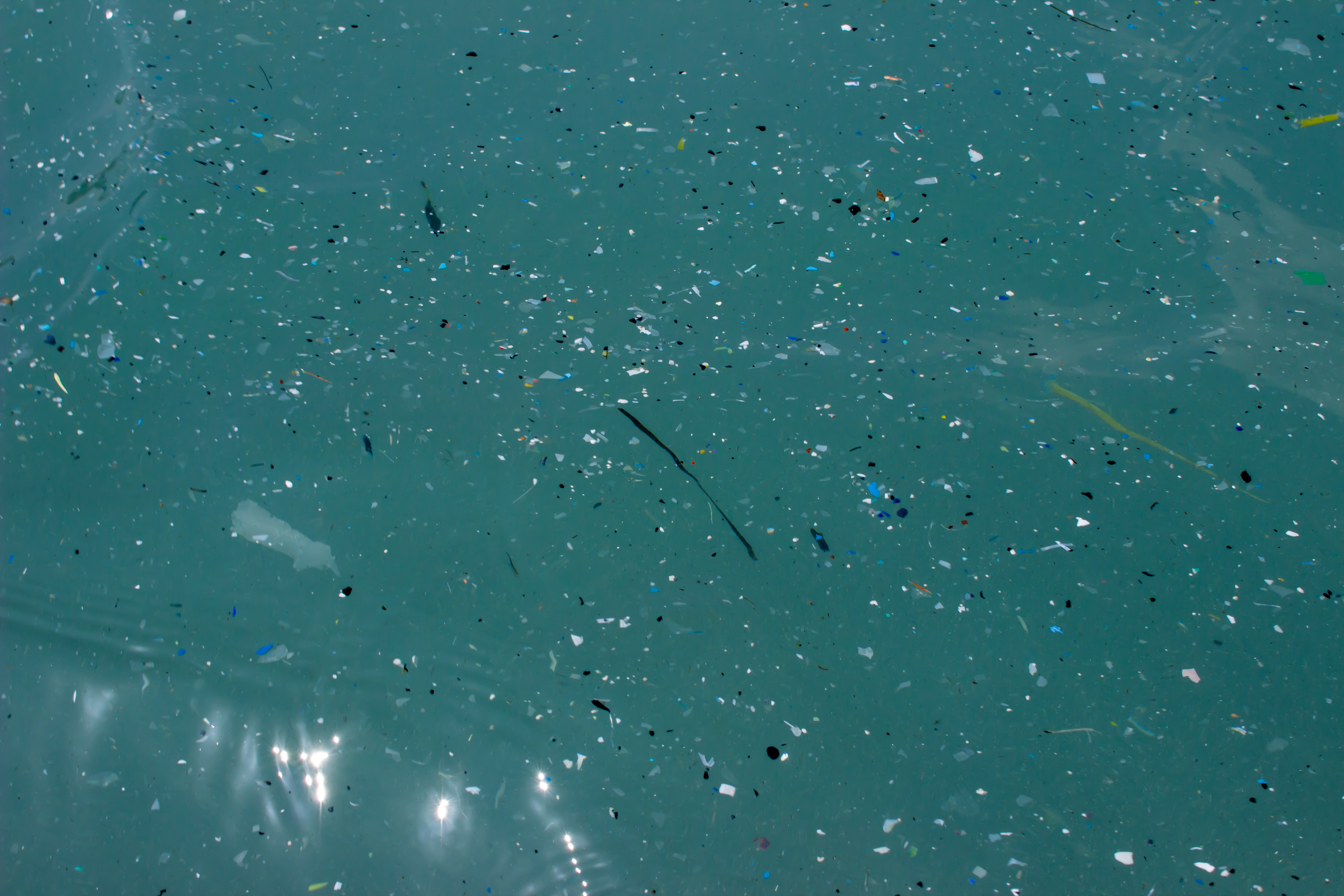For a preview of what a hotter, more geopolitically unstable future might look like, you don’t have to go much further than the world’s shipping lanes—the daily commute for most of our consumer goods, from solar panels to electric car batteries, refrigerators and sneakers. Drought exacerbated by climate change in Central America has reduced traffic through the Panama Canal by 40%. Shipping through the Suez Canal, linking Europe to Asia, has also come to a near standstill as Iranian-backed Houthi militants in Yemen escalate attacks on Red Sea cargo ships in what they say is a protest against Israel’s military campaign in Gaza.
There are alternatives of course. Shippers with New York-bound goods from the Chinese port of Shanghai can dock in Los Angeles and truck their wares across the U.S. instead. And cargo ships plying the Europe-Asia route through the Suez Canal can take the long way around Africa. Those alternatives are often slower—adding up to 15 days on some Europe-Asia routes—and more expensive. But the bigger long-term cost comes in the form of increased planet-warming carbon emissions.

As a nonprofit journalism organization, we depend on your support to fund more than 170 reporting projects every year on critical global and local issues. Donate any amount today to become a Pulitzer Center Champion and receive exclusive benefits!
Jacob Armstrong, the shipping policy manager for the Brussels-based sustainable transport advocacy organization Transport & Environment, calculated the extra emissions produced by one such cargo ship, the Al Zubara, which is currently taking the long route from the European port of Rotterdam to China. According to Armstrong, the Al Zubara would normally produce 7,841 metric tons of CO2 going through the Suez Canal. Now diverted around South Africa, it will emit 10,360 tons of CO2, at an increase of 2,519 tons, which is the equivalent of burning 13.9 rail cars’ worth of coal. (Sequestering that amount of carbon would require 41,652 tree seedlings to grow for 10 years).

Considering that 68 ships transit the Suez Canal per day on average, and that approximately 95% of the traffic is currently being rerouted, that could come to an extra 162,727 tons of emissions for every day that the conflict continues (about the same amount that a natural-gas fired power plant emits over five months). “Disruption to global trade does tend to mean more emissions. So yeah, so this is really bad for the climate,” says Armstrong.
Nonetheless, a weeks-long diversion around Africa for a couple of hundred boats is likely to have a marginal climate impact, compared to other major sources of emissions, says Jean-Paul Rodrigue, a professor of maritime business administration at Texas A&M University-Galveston. “Of course, everybody would prefer Suez to be used and hopefully it’s going to come back as soon as possible, but shipping is still the most environmentally sound and efficient way to move stuff over long distances.”
Still, every ton of emissions counts, especially when rising temperatures are driving unexpected weather changes with significant economic impacts, particularly when it comes to transport. Drought along the Mississippi River basin in the U.S., and around the Rhine River in Europe, choked river transport last year. Now it is slowing trade through the Western Hemisphere’s most important route.
Unlike the Suez Canal, which links two bodies of water at similar elevations, transit through the Panama Canal relies on a series of ascending locks that use water drawn from a nearby lake. But several seasons of little-to-no rainfall have lowered the water levels, and as a result boats passing through the canal have had to reduce their cargo loads by 40% in order to reduce draft. That translates into diversions, delays, and additional CO2 emissions, especially if shippers turn instead to diesel powered trains and trucks to transport goods overland.
Even if Armstrong agrees that the overall emissions impact of choked traffic on both the Suez and Panama canals is marginal, that calculus could change should continued delays drive a greater demand for speed. Shipping companies avoid traveling at full throttle to conserve fuel costs. But if global demand for goods increases, so too will transportation fees, and cargo ships will be more likely to lay on the gas, increasing emissions exponentially, says Armstrong. “Shipping speed, not distance, is actually the biggest threat for climate impacts. If a ship speeds up, it’s not like emissions go up relative to the increase. The relationship is cubic, so it’s a lot more.”
Armstrong calculates that if shipping companies reduced their speed by 10%, total emissions for the global shipping sector would be reduced by 30%—a significant improvement for an industry responsible for 2% of global emissions, on par with Germany. Even when additional journeys are factored in to make up for slower turnaround times, the end result was a 19% reduction in emissions. “There are a lot of simple things that can be done to reduce shipping’s climate impact,” says Armstrong. “Slowing down is the simplest.”
If anything, the bottlenecks in the two canals proves that the industry is resilient. While shipping fees have gone up, economies of scale mean that prices on the transported goods themselves have not. Long term, that may change. But short term, it proves that a cargo ship transporting refrigerators and sneakers from China to Europe around the Horn of Africa can take several days longer with little impact on the end consumer. That also means it could probably slow down once the Suez Canal opens up again, with a much better impact on emissions, and the climate.









